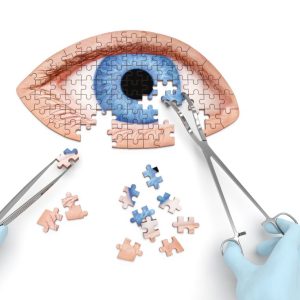Diagnosing Dry Eye Syndrome through Tear Osmolarity Testing
July 16, 2015MiBo Thermoflo® Treatment for Blepharitis and Dry Eye
September 16, 2015 Although we may be best known for providing services related to the name of our state-of-the-art eye care practice, Laser Vision Correction Center of New Jersey, we are pleased to offer a comprehensive range of treatments for all types of eye conditions and disorders. One of the most common conditions we treat is dry eye syndrome, a condition that affects tens of millions of Americans to varying degrees. While there are many possible causes for dry eye syndrome, one of the most frequent is meibomian gland dysfunction, or MGD.
Although we may be best known for providing services related to the name of our state-of-the-art eye care practice, Laser Vision Correction Center of New Jersey, we are pleased to offer a comprehensive range of treatments for all types of eye conditions and disorders. One of the most common conditions we treat is dry eye syndrome, a condition that affects tens of millions of Americans to varying degrees. While there are many possible causes for dry eye syndrome, one of the most frequent is meibomian gland dysfunction, or MGD.
In order to diagnose MGD, eye care professionals have traditionally performed a procedure called a meibography. While effective at allowing professionals to identify the condition, it was also available in only a limited number of eye care clinics due to its relative complexity. It also caused considerable patient discomfort, due to the fact that it required the application of an invasive transilluminating light probe to the eyelid. This probe has a sharp tip and produces heat, causing many patients to complain of pain.
Thankfully, an alternative method of diagnosing MGD has emerged in the form of video meibography. We are proud to offer meibography video visualization at Laser Vision Correction Center of New Jersey to patients who suffer from dry eye syndrome. This diagnostic procedure is non-invasive and painless, and it allows us to definitively diagnose whether MGD is responsible for dry eye. This, in turn, allows us to treat dry eye with greater precision and accuracy.
What is meibomian gland dysfunction?
The meibomian glands are located along the margins of the eyelid, near the lashes. When you blink, these glands secret oil, which helps to prevent the tears from evaporating too quickly and therefore keep the eyes properly moisturized. When these glands fail to function properly, however, either too much or too little oil can be released. This is the most common cause of dry eye syndrome.
Meibomian gland dysfunction, or MGD, is generally characterized by a clogging of the glands with thickened secretions, similar in consistency to toothpaste. Eventually, the glands become unable to secrete oil. As a result, tears evaporate too quickly, leading to chronically dry eyes.
What are the benefits of video meibography?
In general, meibography has always offered many benefits. It allows eye care professionals to evaluate the health and function of the meibomian glands, which are essential to the overall health and function of the eyes. However, aside from causing pain to patients, conventional meibography was also not the most precise and dependable diagnostic test.
Video meibography visualization is performed under high magnification to capture distinct, high-resolution images of the meibomian glands. This allows our doctors to assess the health and function of the meibomian glands with unrivaled precision. Furthermore, it enables them not only to treat dry eye but to gauge the long-term efficacy of that treatment by monitoring the glands over time. All of this is done without causing any discomfort to the patient.
Learn More about Meibography Video Visualization
To learn more about meibography video visualization, please contact Laser Vision Correction Center of New Jersey today.


